Abstract
Groups of mice, inoculated once a week for 3 weeks with vaccines from culture filtrates of Pseudomonas aeruginosa and Proteus mirabilis and slime from Klebsiella aerogenes, were protected against lethal infections with the homologous strains injected intraperitoneally after burning.
A single injection of pseudomonas and proteus vaccines also protected burned and unburned mice against lethal, homologous, i.p. infections as early as 24-48 hr after vaccination. The klebsiella vaccine did not induce early protection. A single injection of a trivalent vaccine, made by combining pseudomonas, proteus and klebsiella vaccines in equal proportions, protected burned mice against lethal K. aerogenes, Ps. aeruginosa and Pr. mirabilis infections.
Mice which were protected against homologous infections had no detectable agglutinins in their sera until three days after the protective response had been demonstrated.
Full text
PDF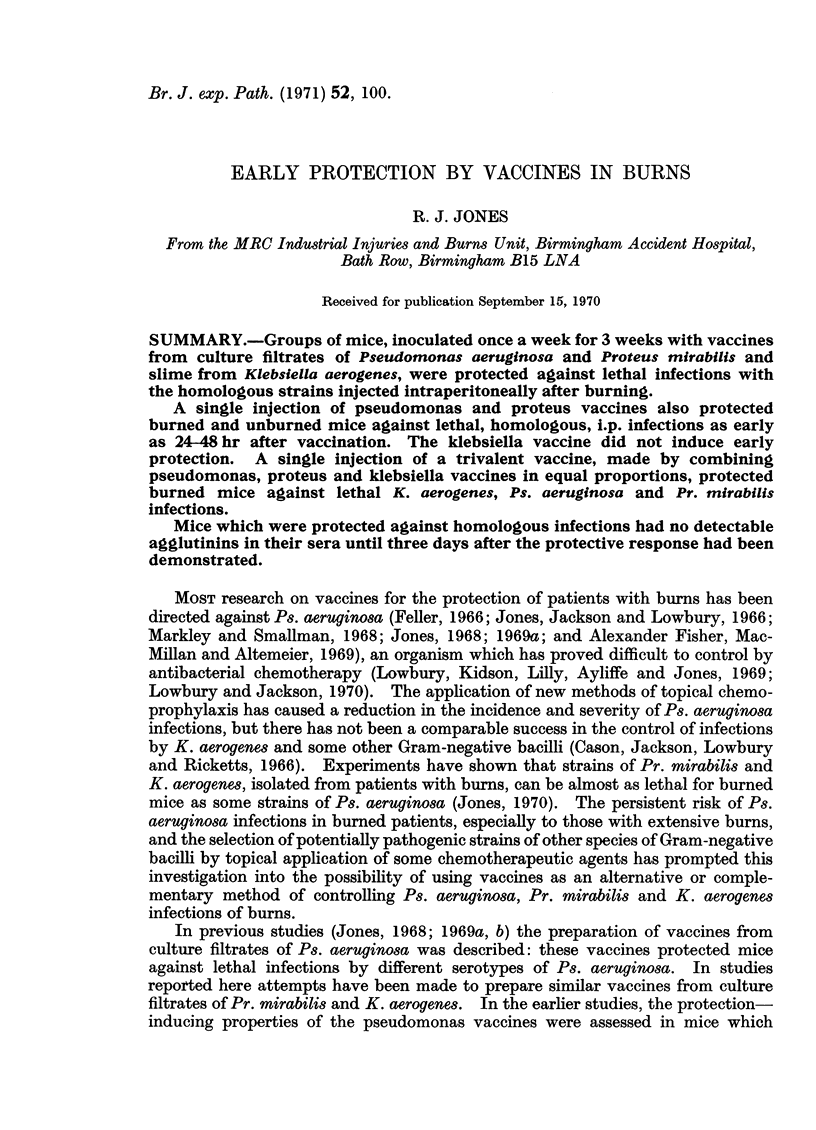
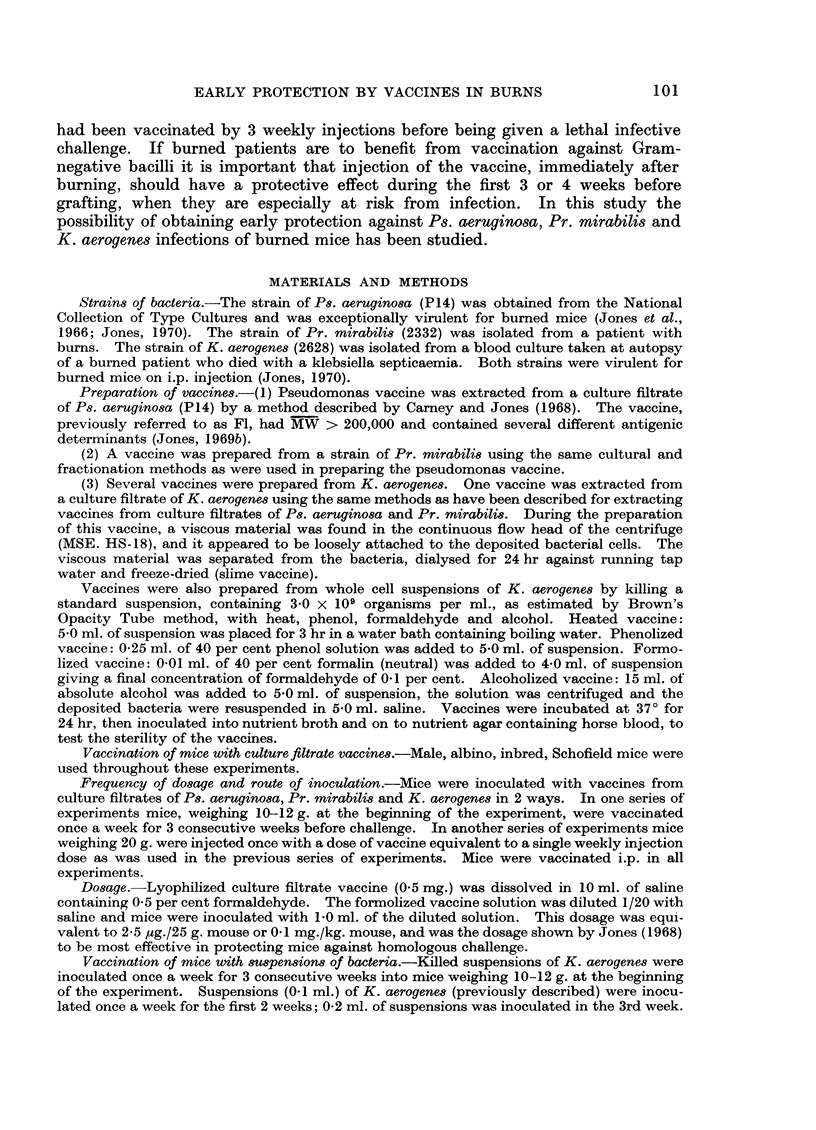
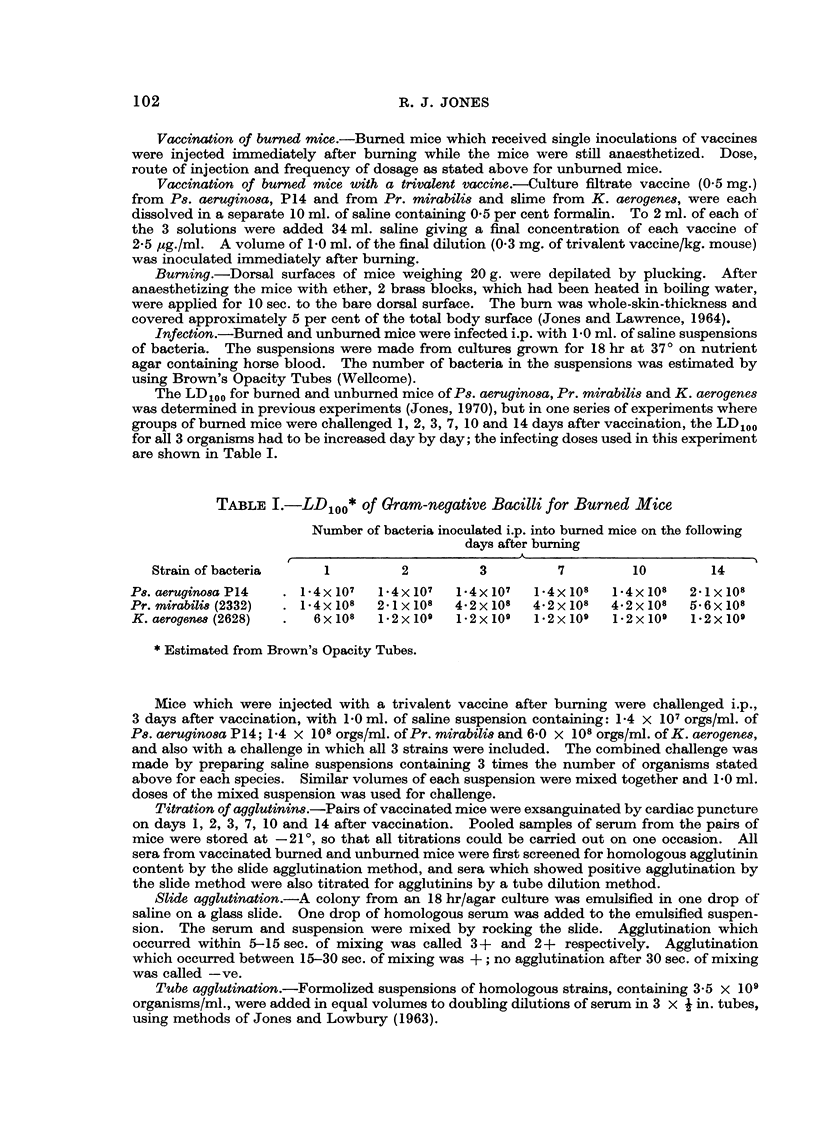
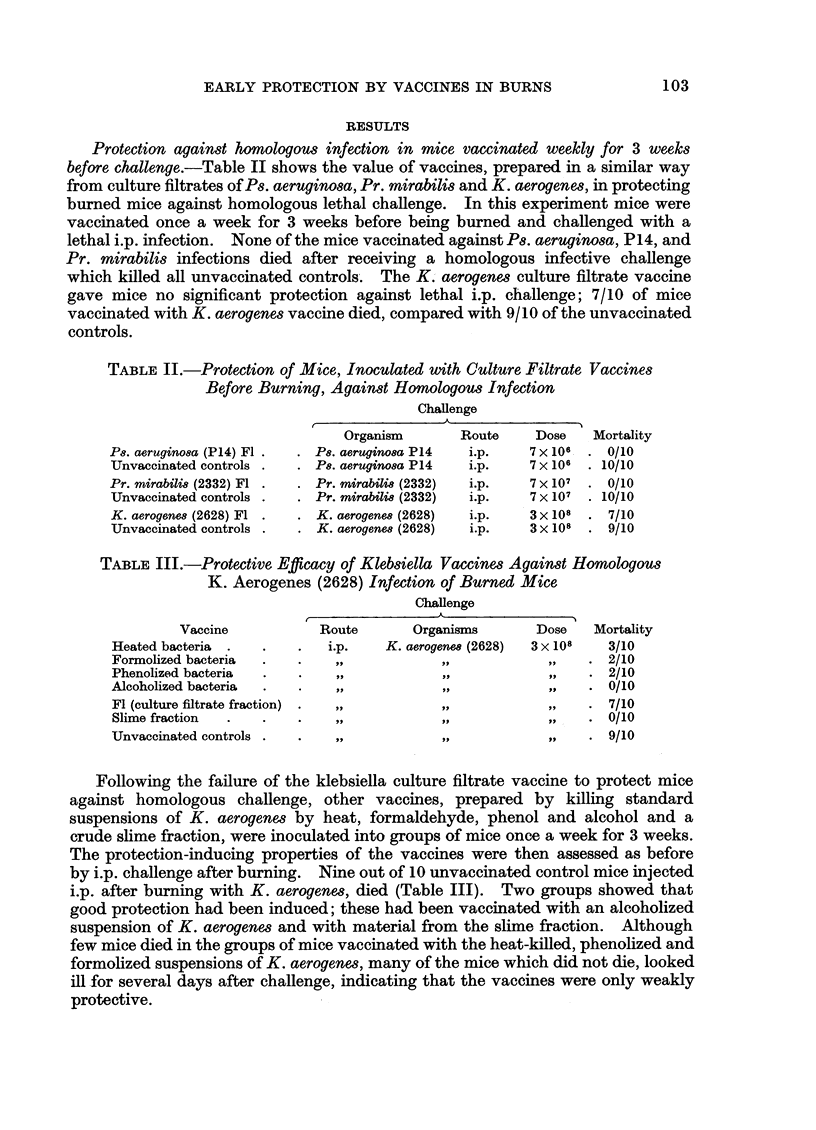
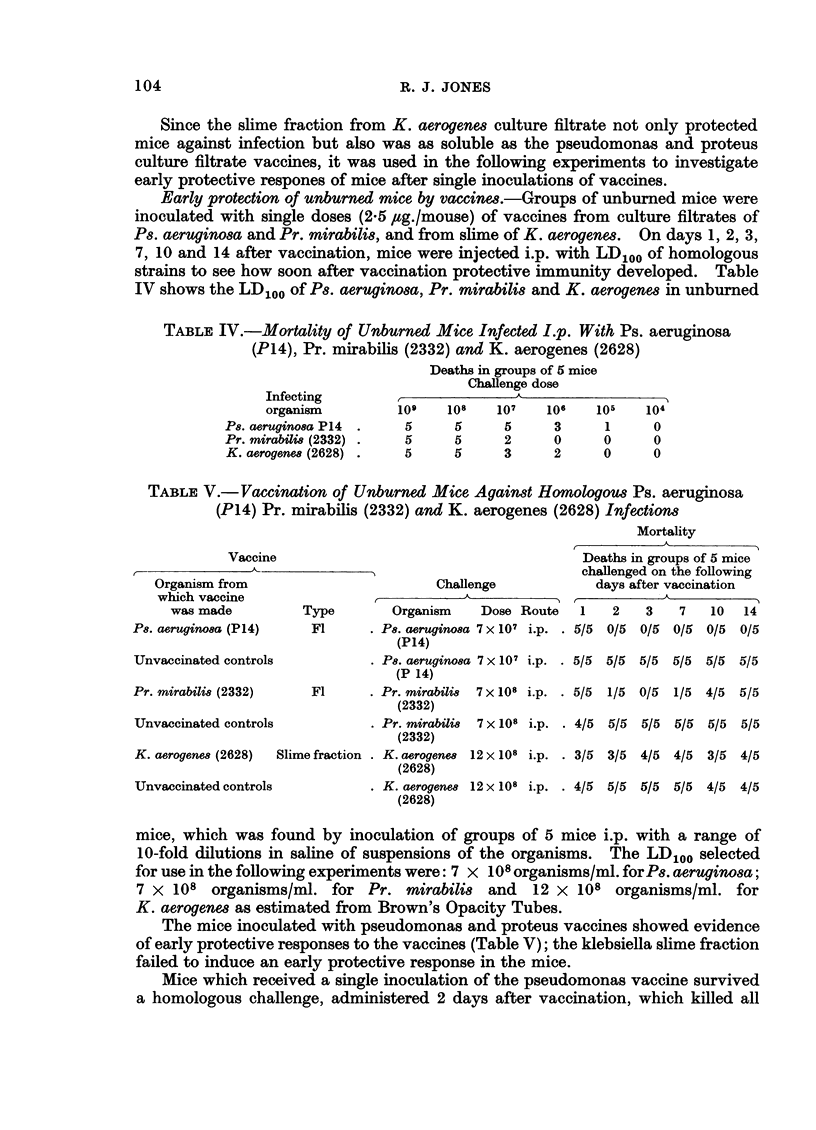
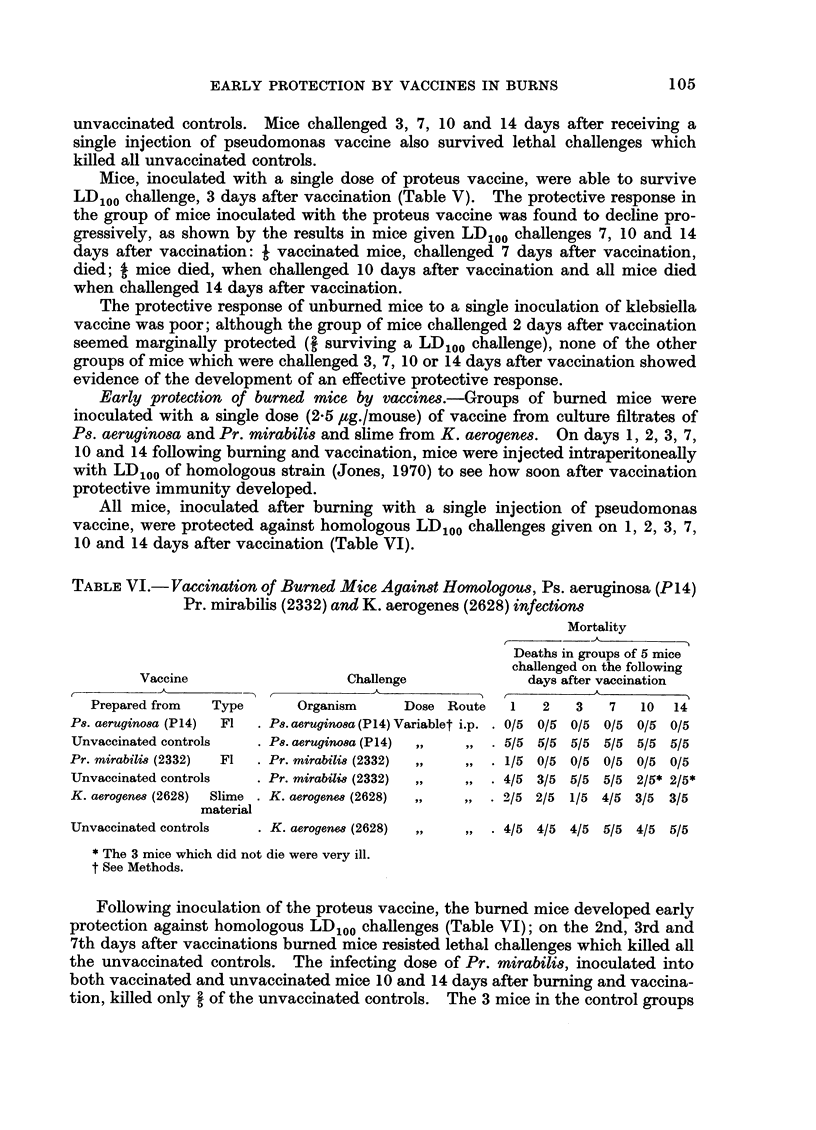
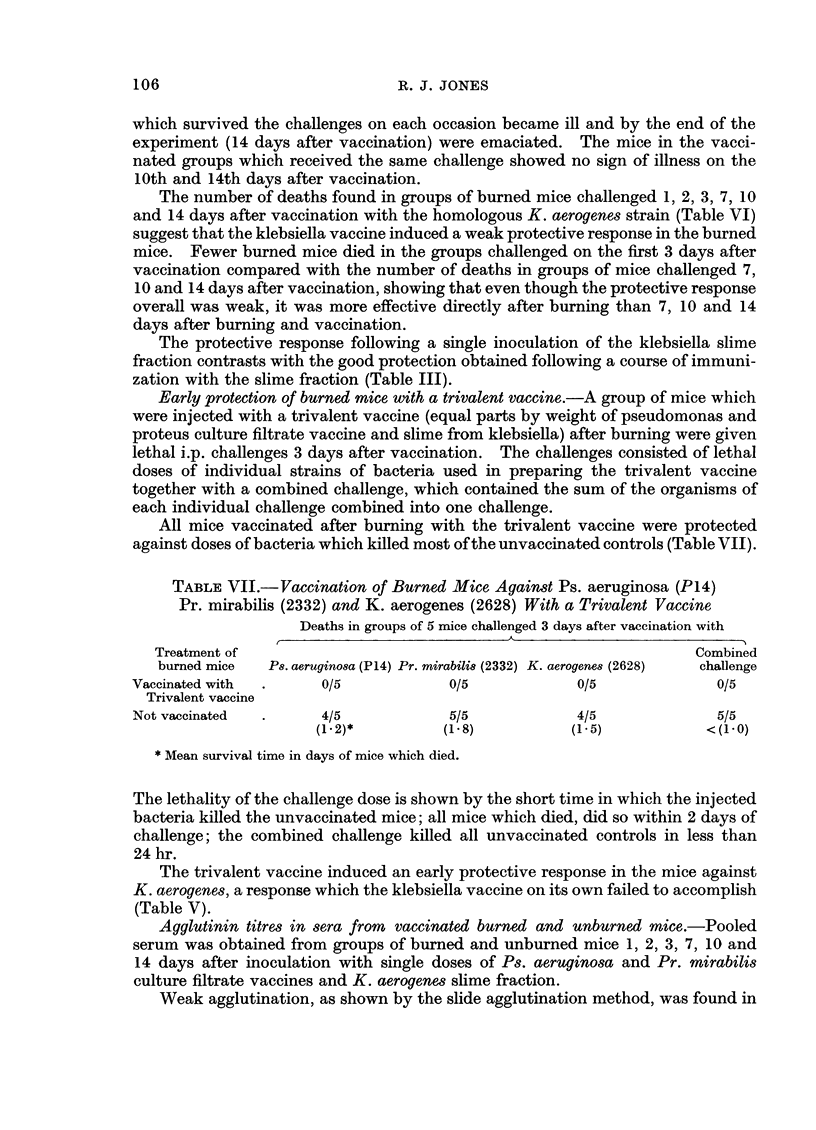
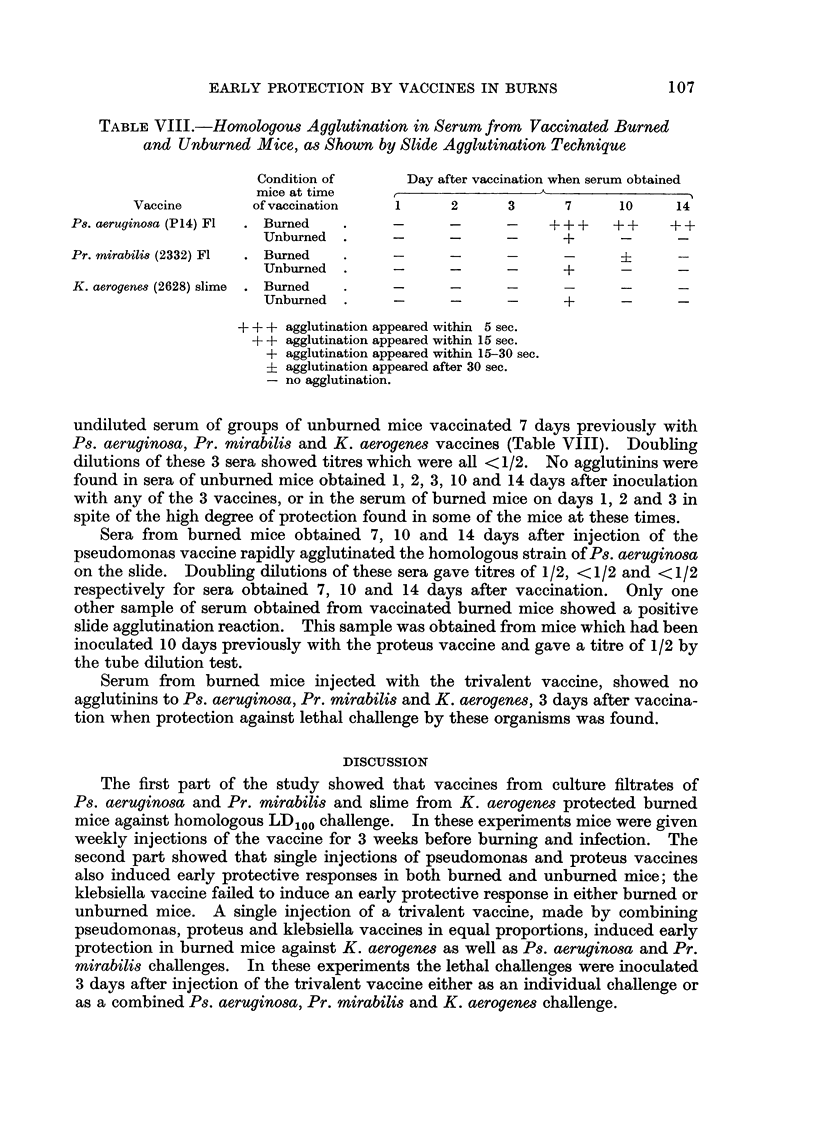
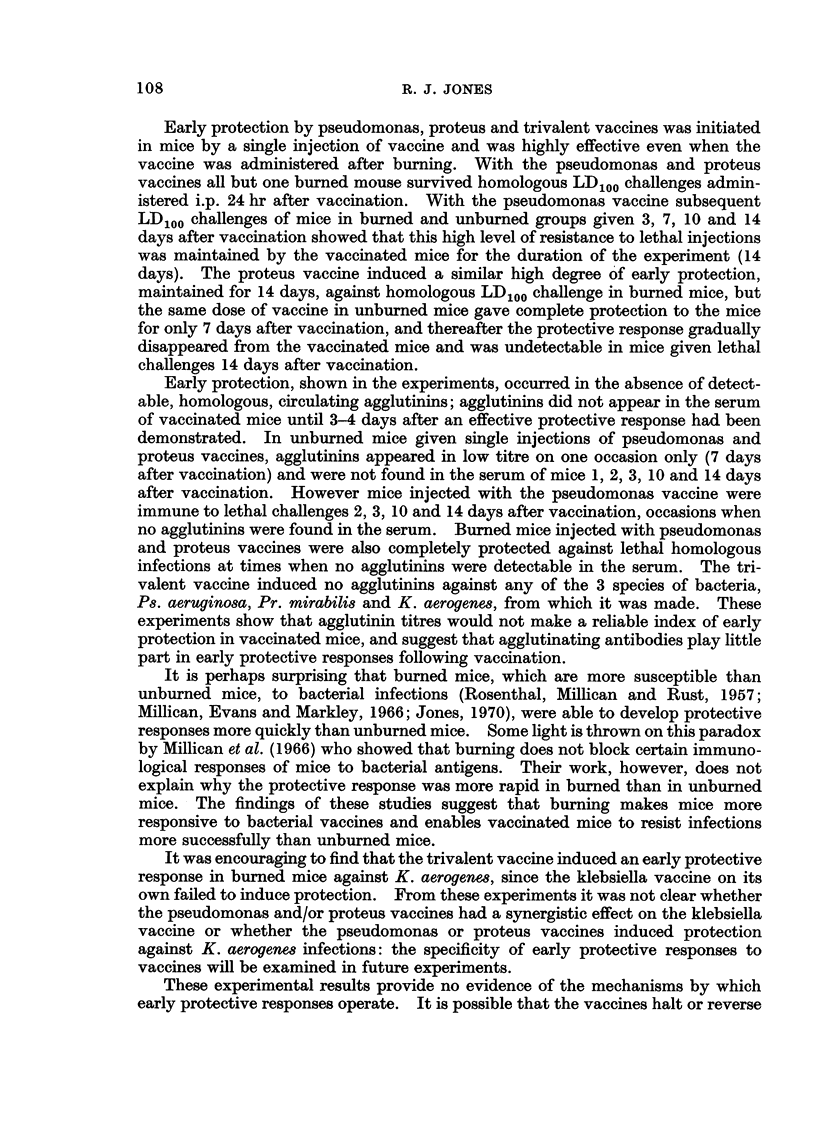
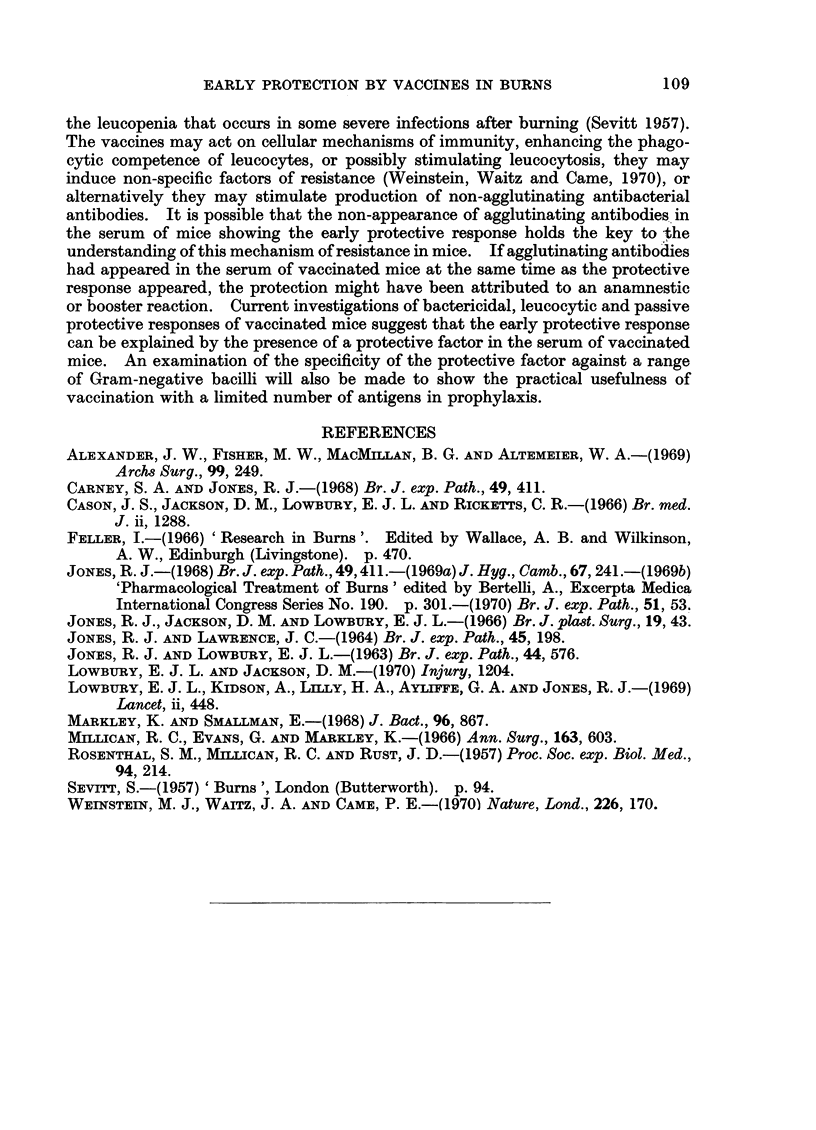
Selected References
These references are in PubMed. This may not be the complete list of references from this article.
- Alexander J. W., Fisher M. W., MacMillan B. G., Altemeier W. A. Prevention of invasive pseudomonas infection in burns with a new vaccine. Arch Surg. 1969 Aug;99(2):249–256. doi: 10.1001/archsurg.1969.01340140121018. [DOI] [PubMed] [Google Scholar]
- JONES R. J., LAWRENCE J. C. STUDIES ON EXTRACTS OF HEATED AND NORMAL SKIN. Br J Exp Pathol. 1964 Apr;45:198–206. [PMC free article] [PubMed] [Google Scholar]
- JONES R. J., LOWBURY E. J. STAPHYLOCOCCAL ANTIBODIES IN BURNED PATIENTS. Br J Exp Pathol. 1963 Dec;44:576–585. [PMC free article] [PubMed] [Google Scholar]
- Lowbury E. J., Lilly H. A., Kidson A., Ayliffe G. A., Jones R. J. Sensitivity of Pseudomonas aeruginosa to antibiotics: emergence of strains highly resistant to carbenicillin. Lancet. 1969 Aug 30;2(7618):448–452. doi: 10.1016/s0140-6736(69)90163-9. [DOI] [PubMed] [Google Scholar]
- MILLICAN R. C., ROSENTHAL S. M., RUST J. A factor in human gamma globulin preparations active against Pseudomonas aeruginosa infect. in mice. Proc Soc Exp Biol Med. 1957 Jan;94(1):214–217. doi: 10.3181/00379727-94-22904. [DOI] [PubMed] [Google Scholar]
- Markley K., Smallman E. Protection by vaccination against Pseudomonas infection after thermal injury. J Bacteriol. 1968 Oct;96(4):867–874. doi: 10.1128/jb.96.4.867-874.1968. [DOI] [PMC free article] [PubMed] [Google Scholar]
- Millican R. C., Evans G., Markley K. Susceptibility of burned mice to Pseudomonas aeruginosa and protection by vaccination. Ann Surg. 1966 Apr;163(4):603–610. doi: 10.1097/00000658-196604000-00014. [DOI] [PMC free article] [PubMed] [Google Scholar]
- Weinstein M. J., Waitz J. A., Came P. E. Induction of resistance to bacterial infections of mice with poly I-poly C. Nature. 1970 Apr 11;226(5241):170–170. doi: 10.1038/226170a0. [DOI] [PubMed] [Google Scholar]


